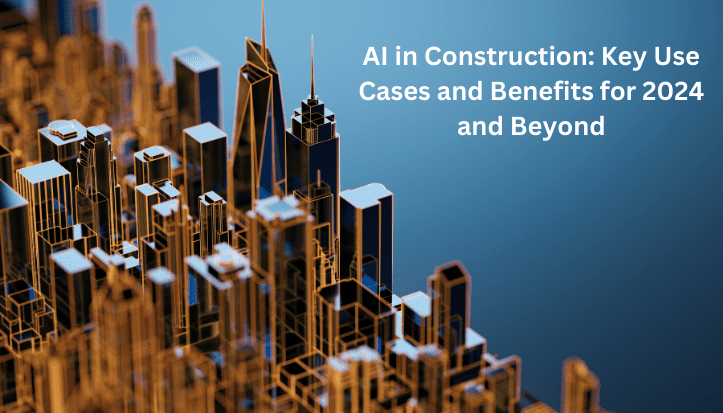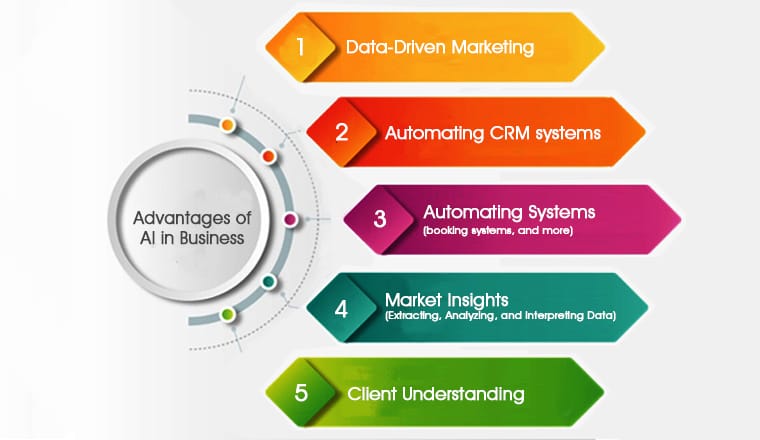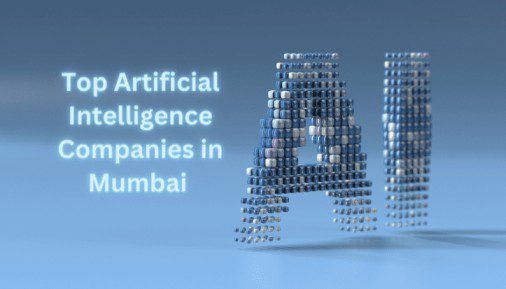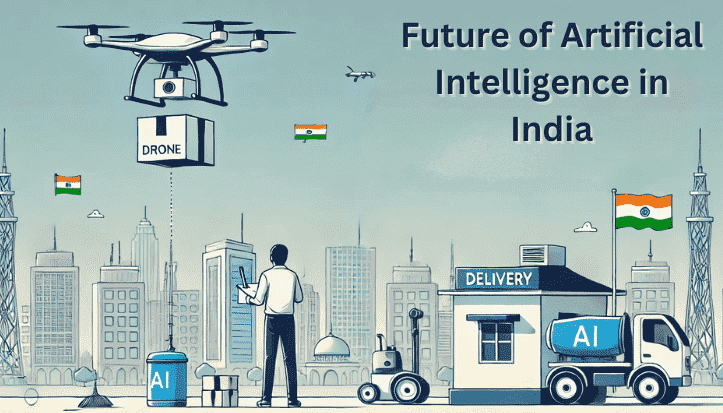In a time when AI-driven technologies like ChatGPT, Perplexity, and Claude dominate the spotlight, a quieter yet equally significant shift is underway in industries like construction, manufacturing, oil & gas, and transportation. The application of artificial intelligence in these traditionally labour-intensive sectors is growing steadily, transforming how ground-level challenges are addressed, especially in construction.
Take, for instance, the construction sector, where AI has stepped in to address complex issues, optimize operations, and enhance safety. From predicting potential hazards to automating routine inspections, the impact of AI is reshaping what has long been considered one of the most labour-intensive fields.
According to Statista Report, over 64% of construction firms in 2024 are actively using or piloting AI technologies to improve efficiency and reduce costs. This rise is driven by a need to boost productivity and tackle the pressing challenges of labour shortages and safety compliance. In this blog, we’ll delve into the evolving role of AI in construction, explore the specific problems it is solving, look into the top powerful AI use cases, and discuss how the industry stands to benefit from these advancements. Our next section takes a closer look at how AI is playing a key role in building the concept of Smart Construction.
Understanding AI in Smart Construction
Artificial Intelligence (AI) is revolutionising the construction industry, leading to the emergence of “Smart Construction.” This approach integrates AI throughout the construction lifecycle—from design and planning to asset management and operations—resulting in more efficient, cost-effective, and safer projects.
Global Market Landscape: AI in Construction As construction adopts AI more widely, its market presence is growing globally. According to Reportsanddata, AI in the construction market is projected to reach $4.51 billion by 2026, reflecting the industry’s shift towards digital transformation and data-driven decision-making.
“Regional Growth of AI in Construction Market: A Comparative Analysis (2018-2026)”
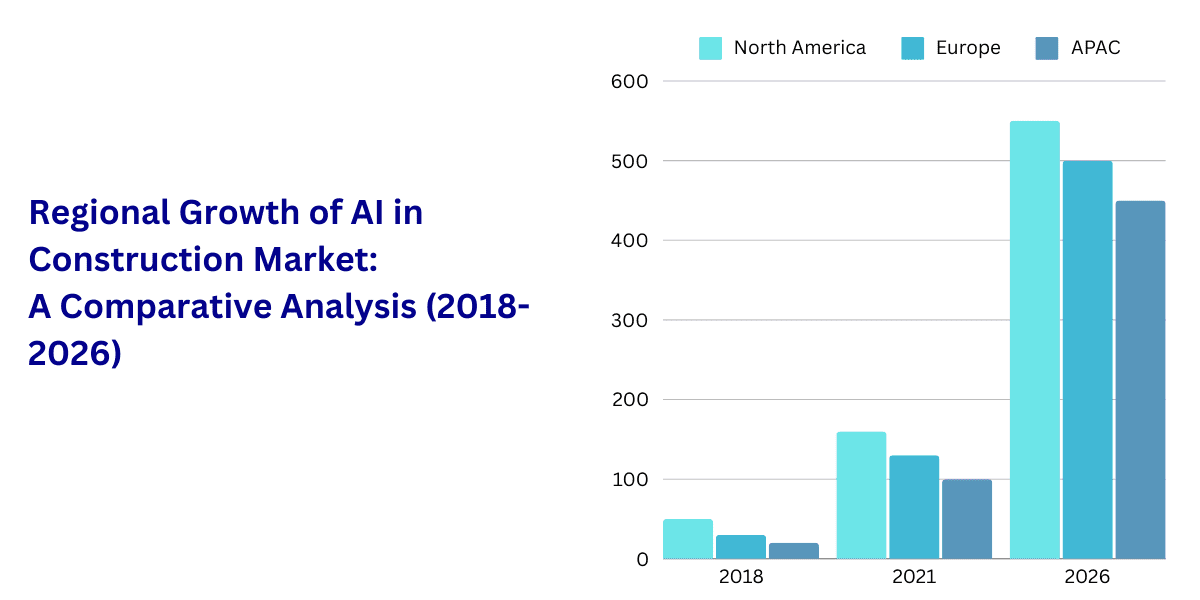
North America held the largest market share of ~29% in the year 2018, owing to the rapid technological advancements and increasing government investments in AI & ML Development.
Europe held a market share of ~23% in the year 2026, owing to the demand for artificial intelligence (AI) in construction for several applications.
Asia Pacific is forecasted to have the highest CAGR of 26.3% during the forecast period, due to the increasing initiatives by governments of those countries in the region.
Real-World Examples of AI in Construction
Since we know how countries worldwide are leveraging the use of AI in construction. Here’s how some leading companies are practically implementing AI to improve construction projects worldwide
- Skanska: Skanska, a prominent international construction company, employs AI-powered scheduling software to proactively identify potential delays and optimize project timelines by analyzing data to predict risks and make informed adjustments to project plans.
Source: SkanksaBlog
- Buildots: Specializing in AI-powered site management, Buildots employs wearable cameras and computer vision to track project progress and identify issues in real-time, offering insights for faster decision-making. As per newswire, they were recently in news for launching the first-ever generative AI assistant in the Construction Industry.
Source: Buildouts Blog
- Komatsu: Known for its AI-equipped machinery, Komatsu uses autonomous and semi-autonomous construction equipment to perform heavy-duty tasks on-site, reducing the need for manual labour and enhancing safety.
Source: Komatsu - Softlabs Group: Known for their research-backed AI solutions, Softlabs focuses on solving ground-level problems related to industries like construction, manufacturing, and transportation.
Check Out their AI Solutions here!
By integrating AI, the construction industry is advancing towards a more sustainable, safer, and smarter future. Smart Construction not only improves project outcomes but also helps companies remain competitive in a rapidly evolving market. In the next section, we will explore top use cases and tangible benefits of AI for construction firms, including increased productivity and improved safety compliance.
Applications of AI in Construction
AI is making its mark across various construction functions, from design to safety. Let’s explore how each application works in the field.
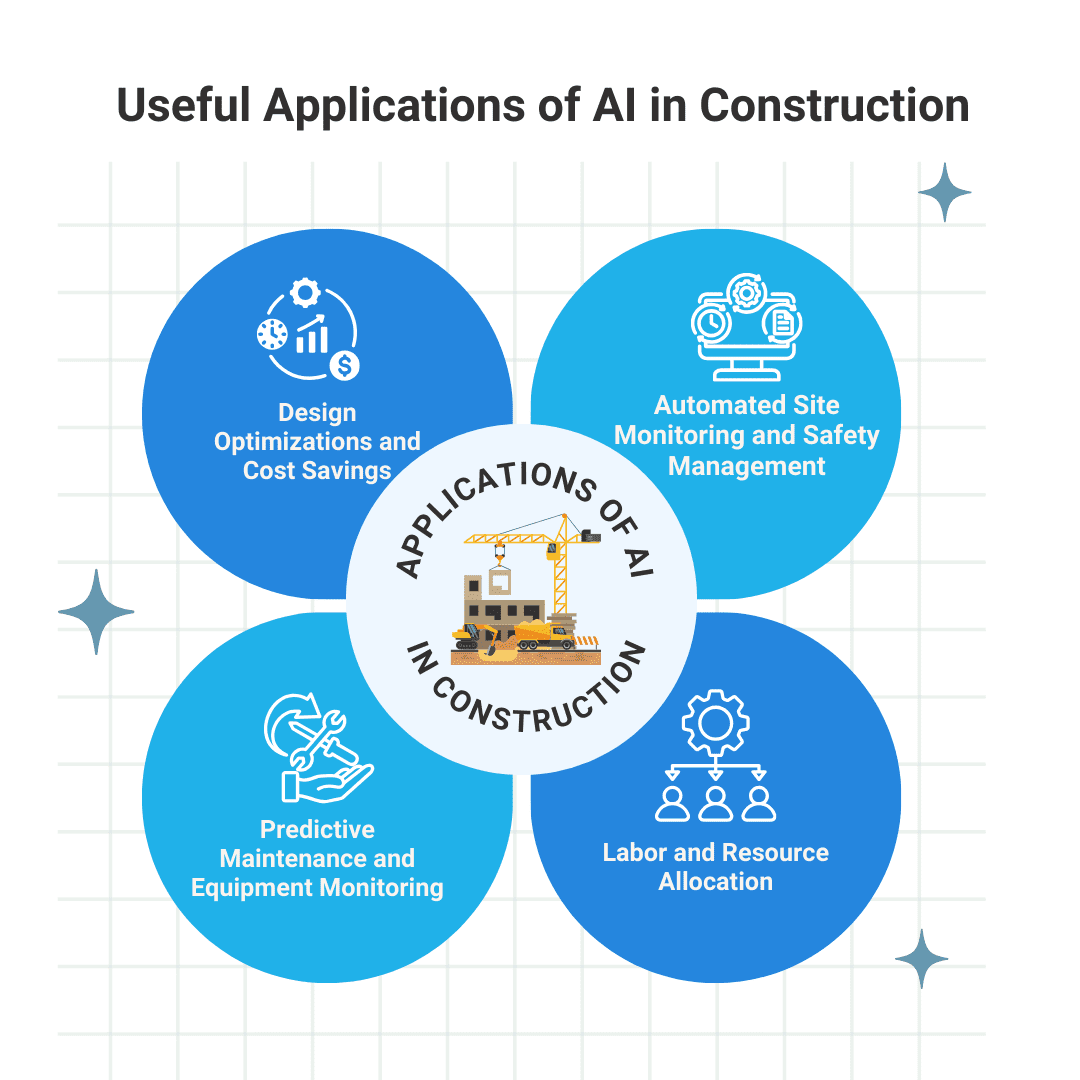
- Design Optimization and Cost Savings
AI-driven tools streamline the design process by generating optimized blueprints that minimize material waste and reduce costs. Machine learning algorithms analyze extensive design data to suggest efficient layouts, material choices, and structural changes, reducing the time and expenses associated with traditional trial-and-error methods.
- Automated Site Monitoring and Safety Management
AI-powered drones, cameras, and sensors enable real-time tracking of equipment, workers, and project progress. These technologies identify safety hazards before they escalate, reducing accidents and promoting a safer work environment. For instance, computer vision can detect workers not wearing safety gear and send immediate alerts, ensuring compliance with safety regulations.
- Predictive Maintenance and Equipment Monitoring
AI assists construction firms in predicting equipment maintenance needs by analyzing data from machinery sensors. Predictive maintenance minimizes unexpected equipment breakdowns, preventing costly project delays. With AI insights, companies can schedule maintenance during non-peak hours, extend equipment lifespan, and reduce overall maintenance costs.
4. Labor and Resource Allocation
AI-driven workforce management tools analyze project requirements, timelines, and available resources to allocate labour more effectively. By forecasting labour demands and scheduling shifts accordingly, AI reduces downtime and ensures efficient project staffing. This is particularly valuable in regions facing labour shortages, enabling construction firms to meet deadlines with available resources.
Top Use Cases of AI in Construction
1. AI-Powered Fleet Management Software

Problem Statement:
Fleet operators faced challenges in managing vehicle performance, minimizing fuel consumption, and ensuring timely maintenance, which led to higher operational costs and reduced efficiency.
Solution:
An AI-powered fleet management software leverages real-time data analytics to monitor vehicle conditions, optimize routes, and predict maintenance needs. This solution enables fleet managers to make data-driven decisions, reduce fuel usage, and enhance overall fleet performance and safety.
KPI:
- Reduction in fuel consumption
- Increased vehicle uptime through predictive maintenance
- Improved route efficiency and reduced travel time
- Enhanced driver safety and compliance
Specific Area of Application:
- Logistics and Transportation
- Public Transportation Systems
- Delivery and E-commerce Fleets
Check the whole solution here!
2. AI for Automated Inventory Tracking

- Problem Statement:
Construction sites often struggle with inventory management, leading to material shortages or surpluses that delay projects and increase costs. - Solution:
An AI-powered automated inventory tracking system uses real-time data to monitor material levels, track usage, and predict when supplies need to be reordered. By providing accurate, up-to-the-minute inventory insights, this solution helps construction managers avoid costly delays, optimize material usage, and prevent waste, keeping projects on schedule and within budget. - KPI:
- Reduction in material shortages and surpluses
- Decrease in project delays due to improved inventory management
- Reduction in material waste and associated costs
- Increased efficiency in procurement and stock control
- Specific Area of Application:
- Large-scale construction projects
- Infrastructure development
- Manufacturing facilities with high material demands
Check the whole solution here!
3. AI for Workplace Safety: PPE Detection

Problem Statement:
Construction sites face significant safety challenges, as workers may overlook essential personal protective equipment (PPE), leading to higher risks of accidents and injuries.
Solution:
An AI-powered PPE detection system leverages computer vision to monitor workers in real-time, identifying whether they are wearing required safety gear, such as helmets, vests, and gloves. This system instantly alerts supervisors if safety compliance is breached, helping to prevent accidents and ensure adherence to safety standards, thereby fostering a safer work environment.
KPI:
- Increase in PPE compliance rates
- Reduction in workplace accidents and safety violations
- Decrease in time spent on manual safety inspections
- Improved overall safety ratings and compliance with industry standards
Specific Area of Application:
- High-risk construction zones
- Manufacturing plants with strict safety requirements
- Oil and gas or chemical facilities
Check the whole solution here!
4. AI for material safety (compliance monitoring)

Problem Statement:
Transportation of construction materials often involves risks related to improper loading and securing, which can lead to material loss, accidents, and safety violations during transit.
- Solution:
An AI-powered material safety monitoring system uses sensors and computer vision to assess load conditions, ensuring materials are properly covered, secured, and compliant with transportation safety standards. This solution automatically detects issues, such as unsecured loads, and alerts operators, minimizing the risks of spillage, fines, and accidents, while enhancing safety compliance throughout the transportation process. - KPI:
- Reduction in incidents of material loss during transport
- Decrease in fines and penalties related to safety non-compliance
- Improvement in overall transport safety ratings
- Enhanced compliance with regulatory standards for material transport
- Specific Area of Application:
- Construction material transportation
- Logistics companies specializing in bulk material shipping
- Infrastructure projects requiring large-scale material movement
Check the whole solution here!
5. AI for Line Production Tracking

- Problem Statement:
Manufacturers and construction firms often face challenges in tracking production line efficiency, detecting bottlenecks, and maintaining consistent output, which can lead to production delays and quality issues. - Solution:
An AI-powered line production tracking system monitors every stage of the production line in real-time, using sensors and data analytics to track performance, detect slowdowns, and identify quality issues. This system enables managers to take immediate corrective actions, optimize workflows, and maintain high production standards, ultimately reducing downtime and enhancing productivity. - KPI:
- Improved production line efficiency and reduced downtime
- Decrease in production delays and bottlenecks
- Enhanced quality control and consistency in output
- Increase in overall production yield
- Specific Area of Application:
- Manufacturing and assembly lines
- Construction prefabrication facilities
- Large-scale production plants
Check the whole solution here!
6. AI for Vibration Tracking Safety

- Problem Statement:
Workers in industries such as construction, manufacturing, and mining are frequently exposed to intense vibrations from machinery, which can lead to health issues like Hand-Arm Vibration Syndrome (HAVS) and Whole-Body Vibration (WBV). Current safety measures lack real-time monitoring, leading to increased health risks. - Solution:
This wearable device actively monitors vibration exposure levels in real time, providing instant feedback to workers when exposure approaches unsafe limits. It calculates exposure points, offers safe usage time estimates, and sends immediate alerts, helping workers manage exposure safely. The device also detects incidents such as falls, alerting supervisors and ensuring rapid response. - KPI:
- Daily exposure points to prevent overexposure
- Incident detection rate for accurate and timely accident alerts
- Number of real-time alerts issued upon reaching safe exposure thresholds
- Database accuracy for reliable historical data on worker exposure
- Specific Area of Application:
- Manufacturing and Assembly
- Construction and Heavy Machinery Operations
- Mining and Drilling Operations
How can AI boost construction?
As AI continues to advance, its role in construction will only grow, making it an essential asset for companies. Take a look at how it benefits the industry as a whole.
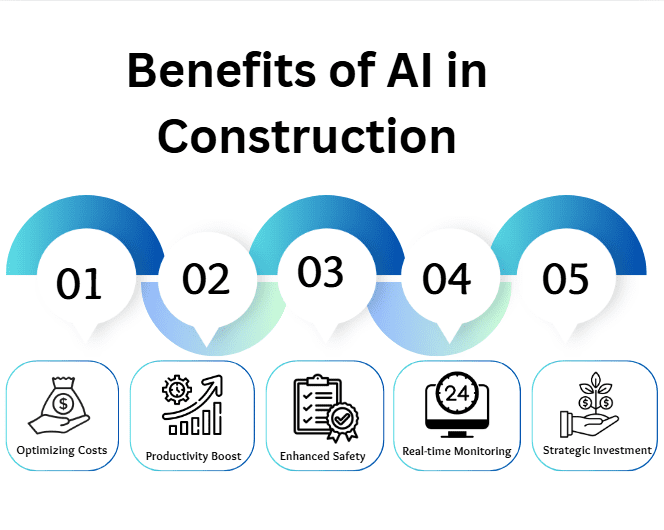
1. Cost Benefits
AI in construction can significantly reduce costs by optimizing resource allocation, minimizing waste, and automating repetitive tasks. For example, predictive maintenance powered by AI can help identify when machinery is likely to fail, allowing companies to perform maintenance before breakdowns occur, thus avoiding costly downtime. According to a report by McKinsey, AI applications can increase productivity by up to 50% in construction, leading to substantial cost savings over time.
Source: McKinsey – AI in Construction: The Future of the Industry
2. Not a Spend but a Strategic Investment
Investing in AI technology is not merely an expense; it’s a strategic move that can enhance overall project outcomes and competitiveness. Companies that adopt AI tools can see a rapid return on investment (ROI) by streamlining processes, improving efficiencies, and reducing errors. For instance, Autodesk reported that construction firms that leverage AI for project management can see a reduction in project timeframes by up to 30%, allowing them to take on more projects and generate more revenue.
Source: Autodesk – The Future of Construction: AI is Here
3. Boost Productivity
AI solutions improve productivity by automating mundane tasks and enhancing decision-making processes. Tools powered by AI can analyze vast amounts of data to provide insights that help teams make informed decisions quickly. A study published by the World Economic Forum indicated that AI technologies could increase productivity in construction by as much as 20-30%. By automating routine tasks such as scheduling and supply chain management, teams can focus on high-value activities that drive project success.
Source: World Economic Forum – How Artificial Intelligence is Reshaping the Construction Industry
4. Enhanced Safety Standards
Safety is a paramount concern in the construction industry, and AI plays a critical role in enhancing safety standards. AI systems equipped with computer vision can monitor job sites in real-time, identifying potential hazards and alerting workers before accidents occur. For instance, the use of drones for site inspections allows for safer and more comprehensive monitoring of hard-to-reach areas, reducing the risk of accidents. According to a study by PwC, AI-driven safety solutions can reduce incident rates by as much as 20%.
Source: PWC – The Future of Safety in Construction
5. Real-Time Monitoring for Better Decision-Making
Additionally, AI provides real-time monitoring of construction sites, offering instant insights into project progress, resource usage, and potential issues. This visibility enables project managers to make timely interventions and adjustments, ensuring that projects stay on track and within budget. Real-time monitoring also helps in assessing workforce productivity and identifying bottlenecks in processes. For instance, BuildBite’s AI platform provides real-time insights that allow for proactive management, keeping projects on schedule and reducing costly delays.
Source: BuildBite – AI in Construction: Benefits and Challenges
Overall, these benefits make AI an indispensable part of modern construction, helping companies stay competitive and efficient.
Future of AI in Construction
AI is shaping a new era for construction, making projects safer, faster, and more sustainable. With rapid advancements in AI technologies, we’re beginning to see real-world examples of how AI can redefine construction from planning to execution.
Smarter Sites: The Rise of Autonomous and Connected Construction
AI is already being applied in areas like design optimization, real-time monitoring, and predictive maintenance. Today, companies like Built Robotics and Boston Dynamics are pioneering autonomous machinery that can carry out repetitive tasks with precision, Meanwhile, companies like Softlabs Group are enhancing worker safety and real-time monitoring, which boosts productivity and minimizes human error. But looking forward, we’re likely to see more sophisticated tools for autonomous site management—imagine construction sites where robots, drones, and AI systems work together to monitor progress, perform quality checks, and adjust resources on the fly. AI in construction could also power advanced digital twins—real-time digital replicas of buildings—that help construction teams anticipate issues before they arise, saving time and costs.
Where is the Construction Industry Headed?
The construction industry is evolving to meet ambitious new goals: creating safer, more sustainable buildings faster and at lower costs. Key milestones will include zero-accident sites, where AI ensures worker safety by predicting hazards before they occur, and carbon-neutral construction, where AI helps optimize materials and energy use to reduce environmental impact. KPIs are also shifting, with companies increasingly focusing on energy efficiency, waste reduction, and digital transformation milestones. The adoption of new-age tech, like IoT-connected equipment and infrastructure that can self-diagnose and signal for maintenance, is setting the stage for smarter, more resilient structures.
What Are New-Age Construction Companies Doing Differently?
Innovative construction firms are already leveraging these technologies to stay competitive. They’re using AI for proactive decision-making: real-time analytics tools help teams spot inefficiencies and take corrective actions immediately. Many are also exploring modular and 3D-printed buildings guided by AI, which allows for rapid assembly while reducing waste. And importantly, new-age construction companies emphasize collaboration between AI systems and human workers. By blending human expertise with AI insights, they’re creating more agile, adaptable, and safer workflows.
Conclusion
From optimizing designs and enhancing safety to reducing costs and boosting productivity, AI offers tangible benefits that can propel your business forward. As the industry evolves, enterprises that embrace AI will not only stay competitive but also set new standards for innovation and efficiency. If you’re a business or IT leader looking to harness the full potential of AI, partnering with an experienced AI solutions provider could be the strategic move that elevates your projects to the next level. The journey to smart construction has just begun—don’t get left behind.
AI in Construction: FAQs
Here are answers to some of the most frequent questions about AI in construction:
1. How is AI used in construction?
AI is used in construction for design optimization, real-time monitoring, predictive maintenance, and enhanced safety measures. It streamlines workflows, improves accuracy, and helps manage resources efficiently, ultimately saving time and reducing costs.
2. What challenges come with implementing AI in the construction industry?
Challenges include high initial investment, data privacy concerns, and the need for AI expertise. Additionally, some companies face resistance to change and difficulties integrating AI with existing workflows.
3. Can you give examples of AI applications in construction?
Examples include autonomous drones for site surveys, predictive maintenance for equipment, AI-powered project management software, and computer vision for safety compliance. These applications help increase productivity, reduce errors, and enhance safety.
4. How can a company start using AI in construction?
To start using AI, companies should identify specific areas for improvement, such as resource allocation or safety monitoring. Partnering with AI solution providers and training staff on AI tools can help ensure smoother integration and higher adoption rates.
5. What are the benefits of AI in construction?
AI offers improved efficiency, cost savings, enhanced safety, and more accurate project management. By reducing manual work and optimizing workflows, AI contributes to faster, safer, and more sustainable construction projects.
6. Is AI suitable for small construction firms?
Yes, AI can benefit small firms, especially with tools for project management, budgeting, and safety monitoring. Many AI solutions are scalable, allowing small firms to start with affordable tools that grow as the business expands.
7. How does AI improve safety in construction?
AI improves safety by using computer vision and real-time monitoring to identify hazards and ensure compliance with safety protocols. It detects issues like missing PPE or unsafe machinery use and alerts workers and supervisors, reducing accidents.
8. What are common KPIs for measuring AI success in construction?
KPIs for AI in construction include reduction in project timelines, cost savings, improved safety compliance, reduction in material waste, and increased equipment uptime. These metrics help evaluate AI’s effectiveness in enhancing productivity and reducing risks.
9. What future AI trends should the construction industry expect?
The construction industry can expect advancements in autonomous machinery, digital twin technology, and predictive analytics for project management. AI integration with IoT for real-time data tracking will also become more prevalent.
10. Are there ethical concerns with using AI in construction?
Yes, ethical concerns include data privacy, the impact on employment, and the responsible use of AI for decision-making. Ensuring transparency, protecting data, and providing workers with training on AI technology can address some of these concerns.


